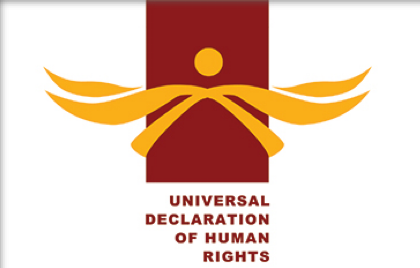Communicating During Contentious Times: Dos and Don’ts to Rise Above the Noise
Community leaders can play a central role in reducing tensions, divisions, and the spread of misinformation that may accompany an election season. The below pointers highlight dos and don’ts for leaders to avoid inadvertently causing harm. Last, we provide simple steps for taking action to reduce likely harms before, during, and after voting occurs.
DOS
Model positive norms: Show that your community is overwhelmingly committed to ensuring free, fair, and peaceful elections.
Highlight stories of community members taking actions consistent with these norms. Emphasize your community’s unifying, local identity–which cuts across lines of division–and draw on local values and stories demonstrating cooperation. Define your community in terms of who it is, rather than who it is not, using its own words, narratives, and local sources.
Emphasize individuals’ agency and the many actions underway to ensure a free, fair, peaceful election.
Amid tensions and uncertainty, people can feel limited in whether and how to respond. Narratives may deliberately create a sense of chaos or cast violence as an inevitability. This can create pressure for people to remain silent or even go along with violence. Emphasizing the work underway to ensure a secure and peaceful election can counteract perceived powerlessness and a sense of chaos, and can offer concrete ways for people to get involved in ensuring a peaceful election. Highlighting this broader context–for instance, the many groups working to ensure communities can securely vote–can also prevent violence or intimidation from having a chilling effect on public engagement.
Where tensions, misinformation, and violence do emerge, consult with targeted communities to learn their needs and preferences for public statements before acting.
Communities targeted with violence and false information often have experience responding in high-threat moments and know best what their community members need. When you do speak out, model empathy toward targeted communities.
Offer a concrete, non-violent path forward for grievances, including clear channels and processes for addressing things in real-time.
Be specific in referring to tensions and/or violence.
Political violence, including harassment, and misinformation are tools to intimidate communities from engaging in public life. Precise, accurate, and accessible language can help ensure violence does not appear more widespread than it is. For example, naming specific districts or stating “at one street corner” rather than referencing full cities or states. Also, be precise about who was involved. For example, saying “there was violence at a protest” could be misleading if the violence was actually from a group of armed counter- protesters and only one or two protesters were involved. Speaking with clarity and precision can limit the ability of violence to intimidate communities from showing up to vote. Importantly, it can also guard against signaling that violence is the norm or expected for those associated with any groups.
DON’TS
Don’t signal negative norms, including through depicting violence as widespread.
Don’t speak about violence without condemning it and highlighting responses.
Highlighting the many efforts underway to ensure all community members can safely vote or peacefully protest help prevent violence from being used as a tool to intimidate and chill civic engagement. Likewise, avoid repeating calls to violence–even if to report on them–lest you provide a platform to vigilante or extremist groups, who may use past violence to further their notoriety and recruitment efforts.
Don’t use vague or speculative language which can engender mischaracterizations and fear-based responses (particularly if the language misconstrues violence as more widespread than it is). Using specific language eliminates room for assumptions and speculation.
Don’t use language that activates fear or anxiety, such as war and natural disaster metaphors (e.g., “protestors flooded the streets,” or “violence erupted”). This also reduces individuals’ sense of agency (personal empowerment) in responding. Relatedly, avoid repeating language that describes people as animals or as less than human (“dehumanizing language”), such as pests, deadly or wild animals, or diseases. This language drives people to act towards those described with less care or concern than they typically would other humans.
Don’t reference entire groups of people when discussing individual actions or viewpoints.
When an incident is the result of one or a few individuals, don’t attribute it to a general group, such as Republicans, Democrats, or protestors. This can engender an association between harmful actions with entire groups of people, furthering notions of collective blame and negative norm-signaling that all within a particular group or community should or do feel/act a particular way. However, when specific individuals or groups are acting in an explicitly unified way, such as illegal militias or institutions, naming them can highlight culpability.
Don’t repeat misinformation or rumors.
Anticipate the types of misinformation and dangerous rhetoric that might circulate throughout the election and arm yourself with clear, specific corrections. Follow best practices in responding to misinformation (see below).****

